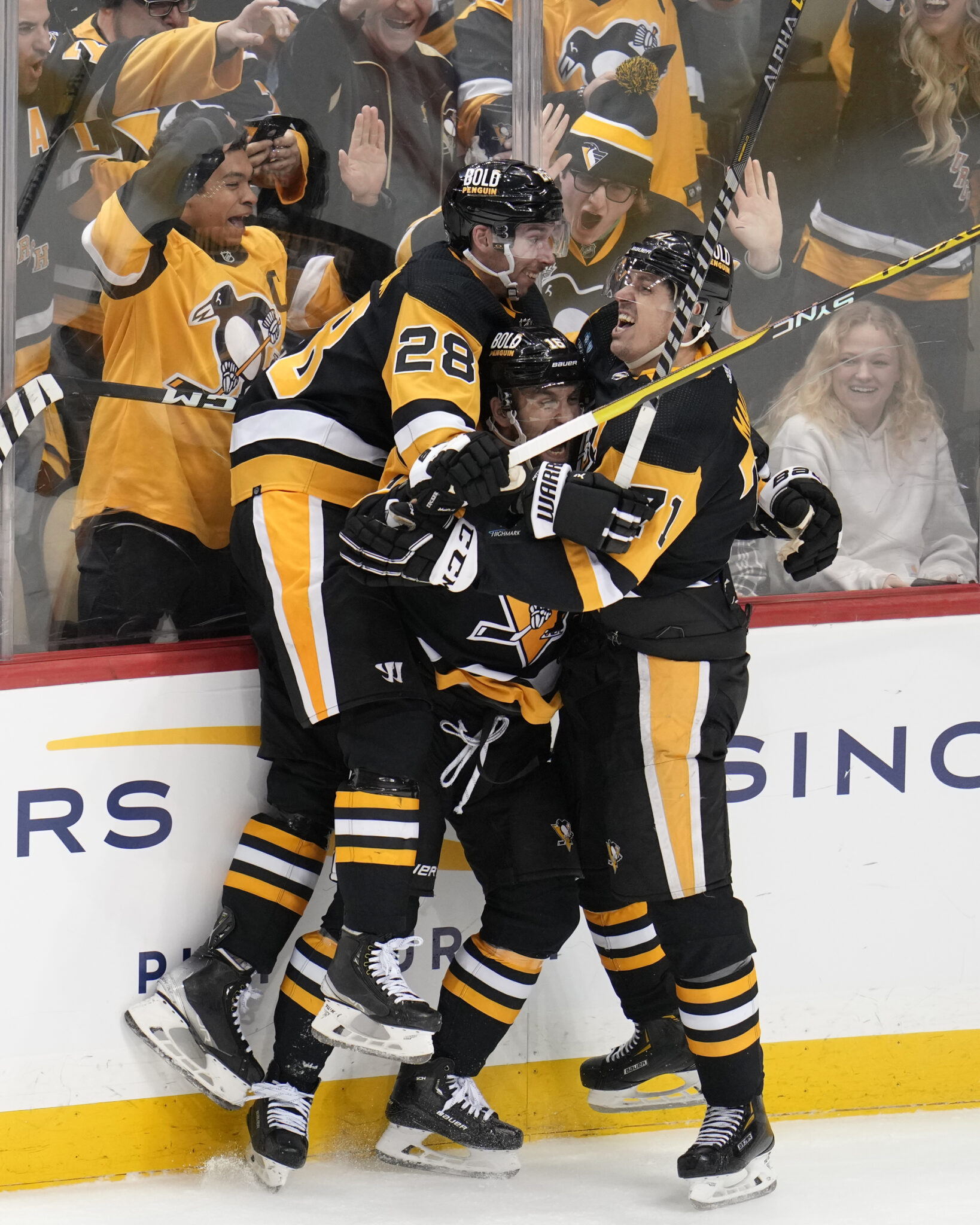NHL Trade Rumors
Looking Ahead, Penguins Trade Needs & Likely Trade Bait

The Pittsburgh Penguins will most likely not make another splash in the NHL trade pool before the NHL season begins next month. GMs are hunkering down to evaluate their talent, examine the fruits of their off-season work, and assess what comes next. Penguins president of hockey operations/GM Kyle Dubas has packed his roster, but a few shortcomings remain, and a Penguins trade or two this fall seems quite possible.
In addition to a couple of needs, unexpected injuries always challenge teams.
The potential absence of Jake Guentzel could change Dubas’s calculus in the short term. Guentzel is projected to miss only two or three weeks of the regular season, but that isn’t guaranteed. Ankle injuries can be tricky.
Given Dubas’s rambunctious summer pushing to remake not only the on-ice product but the Penguins’ front office, it seems a fair assessment that Dubas won’t wait around to address the Penguins lineup flaws, either.
Since taking the job in June, Dubas has moved decisively forward. In addition to free agents, the Penguins traded for Reilly Smith, a cap casualty in Vegas, and Erik Karlsson, a casualty of losing in San Jose.
However, all of the moves and free-agent signings to remake the Penguins bottom-six forwards and blue line appear to have left a couple of needs, most notably offense in the bottom six.
The Penguins will be exceedingly fast again. Every addition was made with the Penguins’ team speed in mind. From the bubble players who will battle for a job in training camp, such as Vinnie Hinostroza and recent PTO signee Austin Wagner, the Penguins can skate.
But there’s also a notable lack of offensive production.
That’s the first need: offense in the bottom six. And it must be affordable, too. The Penguins currently have about $220,000 in salary cap space, which isn’t enough to add another player.
Penguins fans may want to brace themselves for this triggering thought. Based on last season, Jeff Carter remains the highest-scoring player vying for a role in the bottom six. Carter had 29 points (13-16-29) in 79 games. New acquisitions, including Lars Eller, Noel Acciari, Matt Nieto, and Rem Pitlick, didn’t crack the 30-point barrier, and some did not even the 20-point barrier.
The Penguins blue line might need a boost, too.
Despite adding Karlsson, the Penguins defense could also have a weak spot. Currently, Chad Ruhwedel is penciled in as the right-handed starter on the third pairing. However, PTO signing Mark Pysyk is likely a replacement if his Achilles injury, which cost him all last season, is healed.
The third pairing could be P.O Joseph-Pysyk.
However, Dubas has also stocked the left side with depth. Ty Smith remains with the organization. Dubas also signed former New Jersey Devils defenseman Will Butcher, who spent all of last season with the Dallas Stars AHL affiliate, and gave a PTO to 25-year-old defender Libor Hajek.
There exists potential on the left side as Hajek, Smith, and Joseph are 25 and under.
If Dubas needs to make additional trades, the Penguins’ trade chips could come from this surplus, but not necessarily in the aforementioned players.
Trading Joseph, Smith, Butcher, or any of the low-salary gang would create only enough salary cap space to acquire another low-salary scorer. No, the cost of a proper acquisition will likely outpace the minimum salaried d-men.
However, it remains quite possible one of those defensemen could claim a top-four spot, especially Joseph, but perhaps Hajek, too. Last season, Joseph spent significant time in the Penguins’ top four, playing beside Jeff Petry and even some ice time with his mentor Kris Letang. Joseph has the skills but hasn’t yet reached his full potential.
Penguins Trade “Bait”
If Joseph or one of the others pushes for more responsibility, Marcus Pettersson could again find his name in the NHL trade rumors. However, this time, it would be because of his stellar play, not the fading performance of a couple of years ago when his more than $4 million salary cap hit looked onerous.
Pettersson was easily the Penguins’ most consistent and reliable defenseman last season. It wasn’t even close. Adding to Pettersson’s value, he also played well beside top defenseman Kris Letang. In the past, that pairing was poison, but last season it worked.
Pettersson greatly elevated his value with his performance last season, so it’s a double-edged sword to put him on the NHL trade block. Pettersson’s upside is reliability, responsibility, a good first pass, and adequate mobility. However, he’s not irreplaceable.
Pettersson could become the path of least resistance if/when Dubas identifies additional trade targets. Good defensemen are always desirable commodities, and the Penguins have few other options.
It certainly wouldn’t behoove a GM to trade a top-six scorer such as Rickard Rakell or Guentzel to fill a bottom-six scoring need.
And the salary cap structure won’t allow the Penguins to simply trade a draft pick to fill their needs. It must be commensurate salary out for any salary in.
The speed in the Penguins’ bottom six should create a much higher level of puck possession and offensive chances than in the last few seasons. The Penguins may not have a glaring need to acquire bottom-six scoring if they have the puck.
That’s why GMs don’t like early-season trades; you just never know how the team will come together. But if they have needs, their trade bait is limited, and will depend on other players to fill the void preemptively.
Fortunately, answers will be revealed soon.












